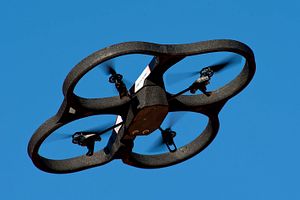Innovation in defense technology requires collaboration between military organizations (who know what they need), the defense industry (which appreciates the parameters of the possible), and the broader civilian economy (which lays the foundation for technological development and provides the resources for defense spending).
Within this very broad framework, states can structure their defense innovation system in a variety of ways. One increasingly important question involves the role that small, civilian-oriented firms can play in defense tech. For at least the last fifteen years, the U.S. Department of Defense has tried to spur small firms to contribute to defense innovation, especially as the costs of military technology increase relative to “off the shelf” civilian tech.
Opinions differ on how much of an impact small businesses can make on Pentagon innovation. Jim Hasik addresses several conditions under which we can expect small businesses to do well, and illustrates his case with several examples. In areas with rapidly changing requirements, skill intensive production, and moderately secure knowledge (in terms of patent and trade secret protection), small firms can successfully ally with big firms, which have advantages with capital intensive production, and incremental innovation. Pete Dombrowski and Eugene Gholz, on the other hand, throw water on the idea of off-the-shelf commercial technology by arguing that small businesses face an immense challenge in navigating the byzantine Defense Department bureaucracy. My own work (on the intellectual property aspect) supports that of Dombrowski and Gholz.
But whether, with respect to the defense industry, small firms play a large role, a small role, or a significant role in alliance with large firms, their presence in the broader civilian economy produces different expectations for differently structured defense-industrial bases. The Soviet defense-industrial base never took advantage of small firms, which did not exist in context of Soviet defense procurement. This hardly meant that Soviet industry couldn’t innovate, or that it couldn’t effectively serve its military customers. It does, however, suggest that innovation will take more incremental, capital-intensive forms than in systems (relatively) more friendly to small-firm input.
The Chinese system has developed in a much different manner than the Soviet one, at least since the 1980s. There are plenty of small, innovative Chinese technology firms. However, granting the opacity of the Chinese defense industrial system, there is little to suggest that the PLA relies on small firms for innovation. Rather, the PLA seems to utilize a combination of time worn and novel forms of espionage to remain abreast of the latest military innovations in the United States and elsewhere.
And so it’s not quite obvious yet that Russia and China will “catch up” to the United States in, for example, military robotics technology. The ability to match the U.S. defense industrial base depends on the structure of that base, and it’s not yet clear that either Chinese or Russian industry can produce consistent technological innovation in the same manner as the United States. That said, they may have other advantages that equalize the game in the long term. Moreover, the United States may yet fail to figure out a way to consistently harness the most innovative elements of its tech sector.

































